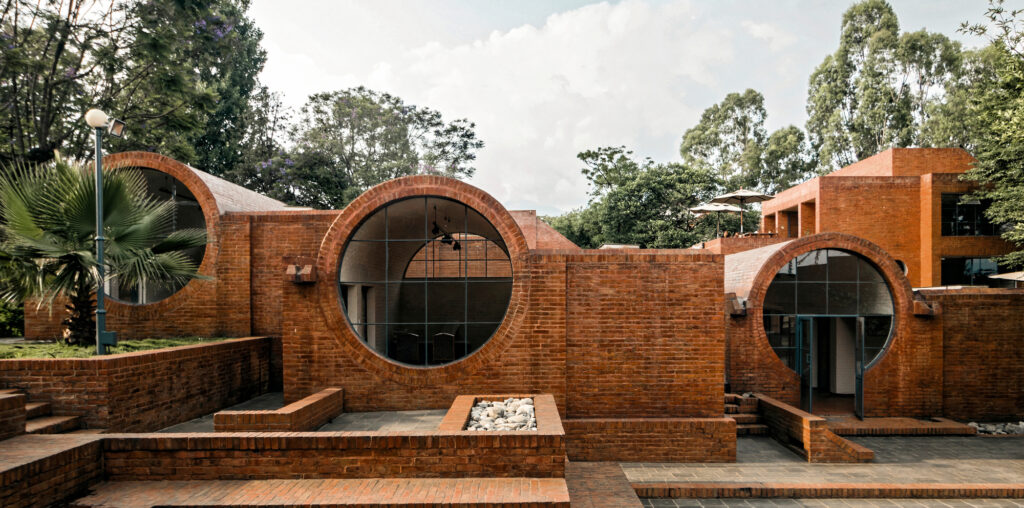
Carl Pruscha, an Austrian architect who mainly dedicated his professional career to investigating and working closely in the field of regional architecture in the Eastern world, a territory that was being overlooked at a time when the modern movement in architecture and in the rest of the world was booming. Through an overview of his life, we will highlight some of his most relevant works in Nepal and Sri Lanka and understand how Pruscha managed to stamp his unique visions of architecture and cities into his built projects.
He was born in Innsbruck, Austria in 1936. After graduating from the Academy of Fine Arts Vienna with a Master’s degree in architecture, he later continued his studies in the United States, where he had his first practical experience working on projects in New York City. He began to stir his career towards urban planning while he was studying at Harvard, connecting with major exponent architects of the modernist movement, such as Josep Lluis Sert and Lewis Mumford. “He had no interest in architecture detached from its cultural, social, and discursive context“, and this was reflected in his final thesis project entitled Vision for Global Urbanization. After graduating from Harvard, Prusha started working in several practices in New York City, claiming his utopian vision of cities and architecture, which many times led him to professional frustrations.

He understood buildings as part of a network, as elements of a comprehensive infrastructure. He had come to the US to gain a deeper understanding of this subject matter.– Natalie Lettner in Carl Pruscha, Singular Personality, Architect, Bohemian, Activist.

With his efforts set on research, he was especially devoted to the study of urban planning in developing countries, “going back to the roots” of city planning and vernacular architecture. Pruscha, after a recommendation from Josep Lluís Sert, started working with Ernest Weissmann, head of the UN Center for Housing, Building, and Planning, where he was offered, in 1964, a place in the United Nations as Planning Expert Advisor to the Government of Nepal at the Department of Housing and Physical Planning, National Planning Commission and was appointed Unesco expert on cultural heritage.


After settling in Kathmandu, he became increasingly interested in Himalayan Vernacular architecture, regionalism, and traditional architecture, and developed urban plans and research committed to heritage preservation in Nepal. He dedicated his years in Nepal to shining a light on the importance of integrating local and international architecture. Not just restoring heritage, but reinventing it. While in Kathmandu, he also started his own architecture studio, where he put into practice and evidence his strongest ideas on how these Himalayan Vernacular building techniques could beautifully blend with modern architecture. His major works include his own private house, Bansbari Residence, the CEDA Building (Centre for Economic Development and Administration, 1967–1969) at the Tribhuvan University for the Ford Foundation, and the Taragaon Hostel for a Nepalese women’s organization in Boudha, Kathmandu.
The CEDA Building

The CEDA Building has a strong relationship with its natural surroundings, the geography, and the history of the Valley. The building’s horizontal lines and terraces go along with the terraced fields of the site and the materials applied are those traditionally encountered in Nepalese construction: mainly brick and wood. It was one of Pruscha’s first built works that finally showed the combination of a modern building but that was still very much Nepalese.


The Taragaon Hostel

The Taragaon Hostel was commissioned by the Nepal Women’s Association, in order to build a guest accommodation for Western artists, writers, and scholars who were visiting Nepal. Now known as the Taragaon Museum, the complex was planned as if it were more of an urban project rather than an individual building. It is a modern barrel-vaulted complex of brick-and-glass structures with clear references to Kathmandu’s indigenous Newar architecture of traditional Buddhist monastic cells called dharmshalas.
Pruscha was later invited by the Getty Institute in Los Angeles as Research Scholar and was the Head of Studio for Habitat, Environment, and Conservation. While combining research studies with the development of architectural projects, he continued working with his team on the delivery of a number of buildings around the world. Years later, he also completed two additional projects, a hotel, and a school, for the “One World Foundation” (OWF) in Sri Lanka. The purpose of the OWF was to develop educational projects, through funding with sustainable tourism.


Lagoon Bungalow Guesthouse

The Lagoon Bungalow was originally built for Pruscha himself and his wife. A small cabin in which the architect reinvented the traditional construction of Sri Lanka, wooden structures to elevate buildings and avoid flooding, and breathable walls that were useful to provide ventilated cool interiors. Instead of using traditional timber, Pruscha replaced these structures with steel nevertheless maintaining a lightweight construction which evidenced once more a successful mix of modern architectural elements with long-established techniques.
In the following years, Pruscha continued his work for Studio for Habitat, Environment, and Conservation with a strong focus on Nepal, Sri Lanka, India, and Bhutan’s regional architecture, while working on other projects in Europe, mainly Vienna, including housing developments, installations, and exhibitions, and research.

Info Via Carl Pruscha: Singular Personality, and Architect’s website.
Editor’s note: this article was originally p





